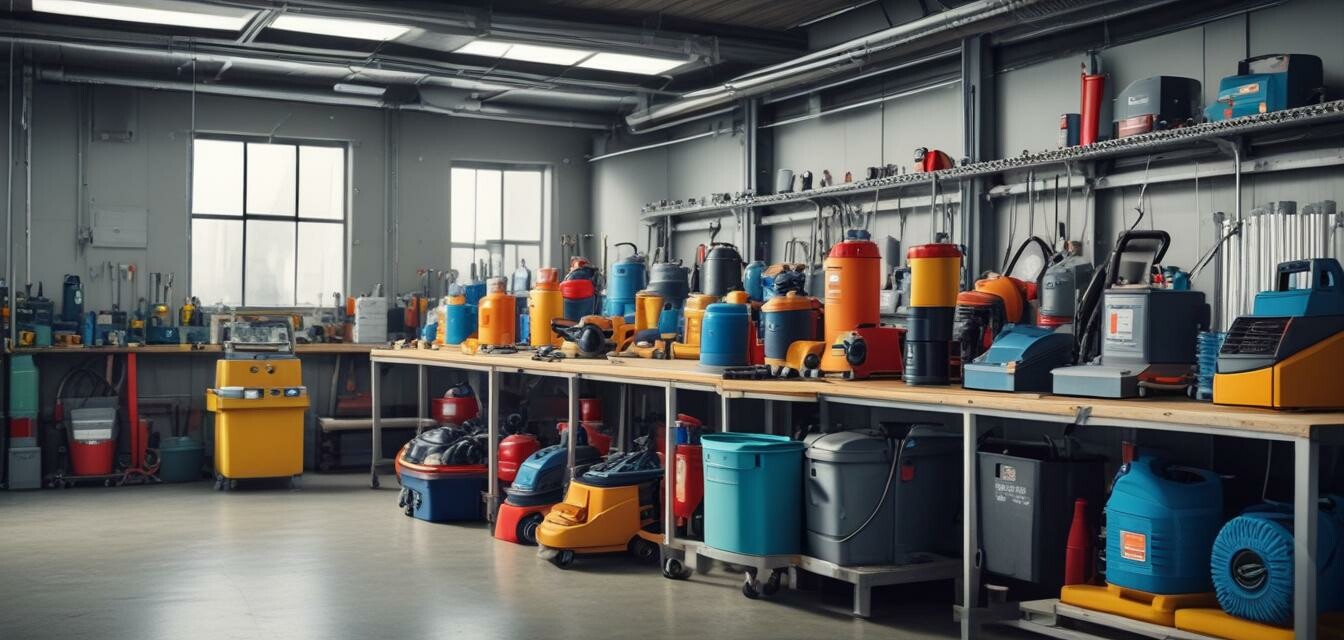
This article was generated using AI and is based on real customer reviews from the Amazon platform. It contains affiliate links, meaning we may earn a commission—at no extra cost to you. As Amazon Associates, we earn from qualifying purchases.
Maintaining Your Cleaning Equipment: Best Practices
Key Takeaways
- Regular cleaning extends the life of your equipment.
- Follow the manufacturer's guidelines for maintenance.
- Utilizing proper storage can prevent damage.
- Routine inspections help catch issues early.
- Train staff on best practices for equipment care.
Heavy-duty cleaning equipment is an investment that ensures cleanliness and hygiene in various settings. Maintaining this equipment is crucial for optimal performance and longevity, especially in demanding environments. In this guide, we provide essential tips for keeping your cleaning gear in top shape.
Why maintenance matters
Effective maintenance of your cleaning equipment is essential for:
- Maximizing performance and efficiency.
- Reducing the frequency of repairs and replacements.
- Ensuring safety during operation.
- Lowering overall operational costs.
Best practices for maintaining heavy-duty cleaning equipment
1. Read the manufacturer’s manual
Every piece of cleaning gear comes with specific guidelines. Make it a point to:
- Understand the features and specifications.
- Follow recommended maintenance schedules.
- Use the correct cleaning solutions and accessories.
2. Regular cleaning and inspection
Just like any machinery, dirt and dust can hamper performance. Here’s how you can keep your equipment clean:
- Wipe down surfaces after each use.
- Check filters weekly and clean or replace as necessary.
- Inspect brushes, pads, and belts for wear and tear.
- Keep hoses and attachments free from clogs.
- Make sure all connections are secure.
3. Proper storage techniques
Where and how you store your cleaning equipment impacts its lifespan. To ensure longevity:
- Store in a dry, temperature-controlled environment.
- Keep out of the way of foot traffic to avoid physical damage.
- Ensure equipment is not stacked to prevent pressure on delicate parts.
4. Maintaining the electrical components
Electrical issues can lead to malfunction or even provide safety risks. Follow these steps for upkeep:
- Check and replace worn-out cords and plugs promptly.
- Inspect switch mechanisms regularly.
- Ensure that all electrical components are dry before storage.
5. Keep an equipment maintenance log
Documentation can help track and schedule maintenance effectively. A log should include:
- Dates of maintenance activities.
- Details of any repairs carried out.
- Observations regarding operational efficiency.
- Scheduled dates for the next maintenance tasks.
Additional tips for optimal maintenance
Tips for Beginners
- Start with a maintenance checklist for each piece of equipment.
- Ask experienced staff for advice on special care tips.
- Consider investing in training sessions on equipment handling.
Conclusion
See above practices, and keep your heavy-duty cleaning gear in prime condition to ensure optimal performance. For more insights and tips, visit our Tips and Tricks section, or explore product categories like Carpet Extractors and Industrial Vacuums for more information on your cleaning needs.
Pros
- Extend the lifespan of your equipment.
- Improve cleaning efficiency and effectiveness.
- Enhance safety during operation.
Cons
- Time-consuming maintenance routines.
- Initial costs for necessary maintenance tools.